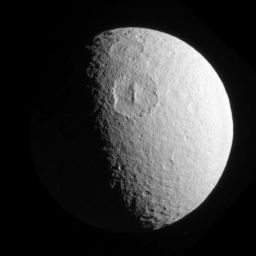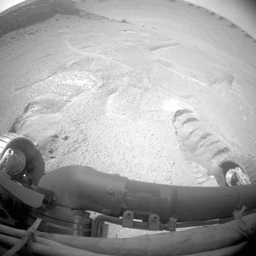Emily Lakdawalla • May 19, 2008
What's up in the solar system for the week of May 19
It's time to check in on what's going on with our trusty robots around the solar system.
This week, Phoenix lands on Mars! Phoenix is expected to land on May 25, 2008, at 23:38:32 UTC (16:38:32 PDT) according to the spacecraft's clock. It will take until 23:53:52 UTC (16:53:52 PDT) for the first radio signals from the surface to reach Earth. I'll have much more on the schedule of events leading up to the landing later today or tomorrow, so stay tuned.
Cassini begins the week having just rounded its periapsis (closest approach to Saturn) on Rev 68, on the sunny (south) side of the rings. It crosses to the shady (north) side tomorrow and reaches apoapsis on Wednesday -- its orbits are now only 8 days long, and steeply inclined at almost 70 degrees. It crosses to the lit side and reaches periapsis again on Sunday. No targeted flybys or more distant approaches to the major moons will occur this week. Last week's raw images included numerous views from the "T43" Titan flyby last Monday, some distant global color mosaics of Saturn and its rings, a 42-frame movie of the F ring, a sequence of the rings occulting a bright star, some distant views of Janus, and some decent-resolution images of Tethys (see below). Last week's image releases included a shot of F ring shepherd Pandora, one of Prometheus and Daphnis in the same field of view, a closeup on the B ring - C ring boundary, one of an ongoing electrical storm in Saturn's southern hemisphere, and a neat shot of Tethys with the Odysseus impact basin making a flat spot on its limb.

NASA / JPL / SSI
Melanthius and Dolius craters, Tethys
Cassini captured this view of Tethys from a distance of about 360,000 kilometers on May 18, 2008. The view is centered on the south pole of the moon. Melanthius is the prominent hexagonal-shaped crater at the center of the image, whose topography is brought into relief by the glancing light near the day-night boundary, or terminator. The hexagonal shape probably formed as a result of preexisting fracture patterns in Tethys' crust before the impact happened. The circular crater to the north of Melanthius is Dolius.At the Moon, Chang'e 1 and Kaguya are currently in orbit. Nothing new was released from either mission last week. At Venus, Venus Express is currently in orbit. Last week, the Venus Express mission announced the first-ever detection of hydroxyl ions (OH-) in Venus' upper atmosphere -- actually, they said it's the first time hydroxyl has been detected at any other planet. Its abundance was found to vary by as much as 50% from one orbit to the next. It's an important molecule because it is so reactive, tending to break apart other molecules in the atmosphere and contributing to its rapid, day-to-day changes.MESSENGER is cruising toward its second encounter with Mercury on October 6, 139 days away. It is 170 million kilometers from Earth and 114 million kilometers from Mercury. There was no new image today, unlike the past three Mondays.
Out in space, New Horizons is 8.98 AU from Earth and 21.67 AU from Pluto, approaching Saturn's distance from the Sun. Voyager 1 and 2, Dawn, Deep Impact, Hayabusa, Rosetta, and Stardust are all in cruise mode, talking to Earth from time to time; Genesis is in hibernation.
Support our core enterprises
Your support powers our mission to explore worlds, find life, and defend Earth. You make all the difference when you make a gift. Give today!
Donate

 Explore Worlds
Explore Worlds Find Life
Find Life Defend Earth
Defend Earth


